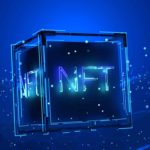Depending on age, humans need 7 to 13 hours of sleep per 24 hours. During this time, a lot happens: Heart rate, breathing and metabolism ebb and flow; hormone levels adjust; the body relaxes. Not so much in the brain.
“The brain is very busy when we sleep, repeating what we have learned during the day,” said Maxim Bazhenov, PhD, professor of medicine and a sleep researcher at University of California San Diego School of Medicine. “Sleep helps reorganize memories and presents them in the most efficient way.”
In previous published work, Bazhenov and colleagues have reported how sleep builds rational memory, the ability to remember arbitrary or indirect associations between objects, people or events, and protects against forgetting old memories.
Artificial neural networks leverage the architecture of the human brain to improve numerous technologies and systems, from basic science and medicine to finance and social media. In some ways, they have achieved superhuman performance, such as computational speed, but they fail in one key aspect: When artificial neural networks learn sequentially, new information overwrites previous information, a phenomenon called catastrophic forgetting.
“In contrast, the human brain learns continuously and incorporates new data into existing knowledge,” said Bazhenov, “and it typically learns best when new training is interleaved with periods of sleep for memory consolidation.”
Writing in the November 18, 2022 issue of PLOS Computational Biology, senior author Bazhenov and colleagues discuss how biological models may help mitigate the threat of catastrophic forgetting in artificial neural networks, boosting their utility across a spectrum of research interests.
The scientists used spiking neural networks that artificially mimic natural neural systems: Instead of information being communicated continuously, it is transmitted as discrete events (spikes) at certain time points.
They found that when the spiking networks were trained on a new task, but with occasional off-line periods that mimicked sleep, catastrophic forgetting was mitigated. Like the human brain, said the study authors, “sleep” for the networks allowed them to replay old memories without explicitly using old training data.
Memories are represented in the human brain by patterns of synaptic weight — the strength or amplitude of a connection between two neurons.
“When we learn new information,” said Bazhenov, “neurons fire in specific order and this increases synapses between them. During sleep, the spiking patterns learned during our awake state are repeated spontaneously. It’s called reactivation or replay.
"Synaptisk plasticitet, evnen til at blive ændret eller støbt, er stadig på plads under søvn, og det kan yderligere forbedre synaptiske vægtmønstre, der repræsenterer hukommelsen, og hjælper med at forhindre at glemme eller til at muliggøre overførsel af viden fra gamle til nye opgaver."
When Bazhenov and colleagues applied this approach to artificial neural networks, they found that it helped the networks avoid catastrophic forgetting.
“It meant that these networks could learn continuously, like humans or animals. Understanding how human brain processes information during sleep can help to augment memory in human subjects. Augmenting sleep rhythms can lead to better memory.
"I andre projekter bruger vi computermodeller til at udvikle optimale strategier til at anvende stimulation under søvn, såsom auditive toner, der forbedrer søvnrytmerne og forbedrer indlæringen. Dette kan være særligt vigtigt, når hukommelsen ikke er optimal, såsom når hukommelsen falder ved aldring eller under visse tilstande som Alzheimers sygdom."
Co-authors include: Ryan Golden and Jean Erik Delanois, both at UC San Diego; and Pavel Sanda, Institute of Computer Science of the Czech Academy of Sciences.
Artificial neural networks learn better when they spend time not learning at all Republished from Source https://www.sciencedaily.com/releases/2022/11/221118160305.htm via https://www.sciencedaily.com/rss/computers_math/artificial_intelligence.xml
- Bitcoin
- bizbuildermike
- blockchain
- overholdelse af blockchain
- blockchain konference
- Blockchain-konsulenter
- coinbase
- coingenius
- Konsensus
- kryptokonference
- krypto minedrift
- cryptocurrency
- decentral
- Defi
- Digitale aktiver
- ethereum
- machine learning
- ikke fungibelt symbol
- plato
- platon ai
- Platon Data Intelligence
- Platonblockchain
- PlatoData
- platogaming
- Polygon
- bevis for indsatsen
- W3
- zephyrnet










